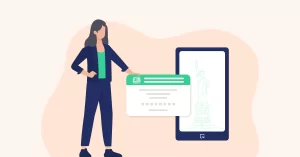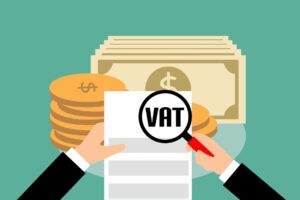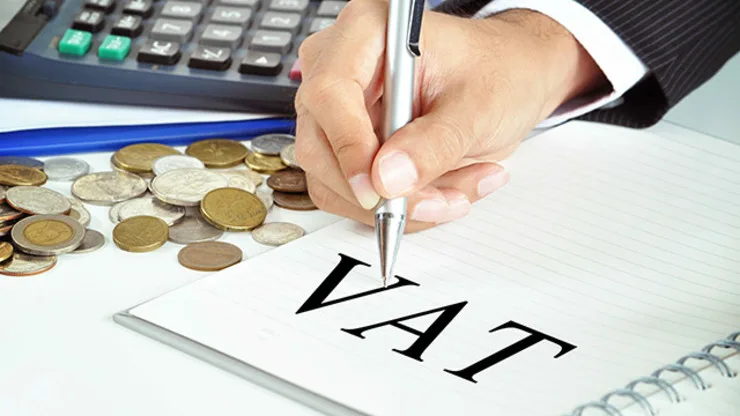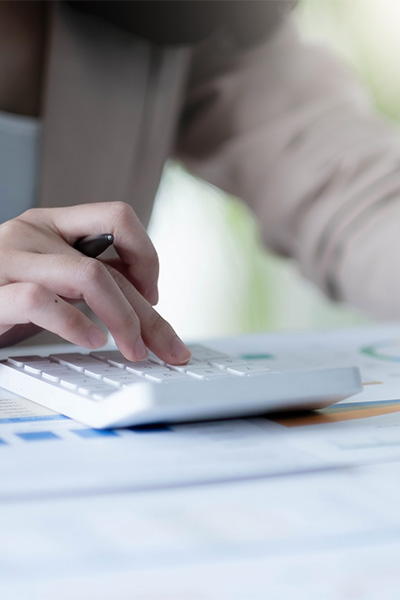When you register for value added tax (VAT), HMRC gives you a unique VAT number that identifies your business for tax registration and payment purposes. Also called VAT registration number (VRN). Your VAT number has nothing to do with your unique taxpayer reference or company number.
When To Register For VAT?
If your turnover in the last 12 months exceeds the £85,000 threshold, or if you expect your turnover to exceed £85,000 in the next 30 days, you must register for VAT. If you are located outside the UK, or if your business is located outside the UK and you provide any goods or services to the UK, you must register for VAT, regardless of turnover. You can choose to register if you are below the threshold. This means that you collect VAT from your customer, but it also means that you can claim the tax back on the costs you incur during the normal course of business. This can be particularly beneficial for cash flow in the early days of setup when costs can be high. However, you must report your VAT at regular intervals and file a VAT return which must include your VAT number.
How To Register For VAT?
Contact HMRC to register for VAT. This is a fairly simple process that can be done online through the Government Gateway service platform. If you are unable to register online, you can do so by post, by filling out the VAT1 form. When you register online, you create a VAT account that you also use to submit your VAT returns. Do it yourself or hire an accountant (or agent) to do it for you. Once registered, you will receive your nine-digit VAT registration number, which you must include on all future invoices, confirmation of your registration date, and information on when to refund VAT and make payments.

Checking VAT Number
If you start working with a new supplier or customer, it’s a good idea to check that the VAT registration number is correct. Invalid VAT registration numbers mean that you may not be able to claim VAT back on goods and services purchased from them; you can only claim back if they have given you a valid VAT invoice with the correct information, including the correct VAT registration number. You can check the VAT registration number online. To do this, you need your own VAT number as well as the name and address of the customer whose VAT number you want to check.
What is The VAT Number?
A VAT number is a unique nine-digit code issued by HMRC to any business registered to pay UK VAT. It is essentially an identification number, which means the government can keep track of how much VAT you have to pay each year.
Where Can I Find My VAT Number?
Find your VAT registration number on the certificate HMRC sent you after you signed up. The first two digits represent the country code (GB for UK businesses), while the remaining digits are a specific set of numbers.
How To Get VAT Number?
VAT numbers are given by HMRC when you apply for VAT registration. Register for a UK VAT number voluntarily or by mail when your turnover in the last 12 months exceeds the £85,000 threshold or you expect to exceed £85,000 in the next 30 days.

Why Do You Need A VAT Identity Number?
VAT stands for value-added tax and is an excise tax that EU consumers pay when purchasing physical and digital goods and services. If you are a non-EU business that sells to EU consumers, you may be responsible for collecting and remitting these fees. Read on to find out why your business might need a VAT identification number. Similar to your EIN number or FTIN number, a VAT identification number is the special number used by EU state governments to track your business’ activities. You’ll use it to track VAT payments, file returns, and earn tax credits. After registering to pay your digital tax you will receive your EU VAT number or VRN for the VAT registered number.
How To Use EU VAT Identity Number?
There are a few moments when your VAT number comes into play. In fact, the number often needs to be used at certain steps of the sales process or when filing a tax return.
When Do I Collect VAT?
If you’re a US-based business that sells digital products to EU customers, congratulations! You have the honor of collecting VAT. But if you’re selling to EU businesses or selling physical products to EU consumers, you can skip this. B2B sales will be covered under the reverse taxation mechanism, while VAT on physical product sales will be paid at customs import.
Important note: To use the reverse charging mechanism, you must obtain the EU VAT identification number from the customer at the point of sale. Always write your EU VAT number and your customers’ numbers on the receipt or invoice.
When Should I Submit A VAT Declaration?
You file an EU VAT return every three months, even if you haven’t made any sales during those three months. Some high-income businesses are required to file VAT every month, while low-earning businesses only need to file once a year. This will adjust over time as you file. However, when you initially register for an EU VAT number, your frequency of application will always be quarterly. You must use your VAT identification number to report your sales and remit any VAT payments through the EU One-Stop Shop (OSS). OSS is a simplified tax system throughout the European Union. You only need to file one comprehensive VAT return in the country where you originally registered for your VAT number.

What Happens If I Do Not Use A VAT Identity Number?
Not registering and paying VAT is very similar to not paying the taxes you owe in the US. EU tax authorities probably won’t knock on your door. However, if it turns out that you have deliberately disregarded your obligations, you may find yourself subject to fines, refunds, and even fraudulent charges. Penalties like this may not matter for multinational corporations that are highly paid legal counsel. But what if you’re a small company or solo entrepreneur? Even modest wages can put you out of work. There is also a moral argument here. You benefit from selling to EU consumers.
Shouldn’t you be subject to the same taxation policies as EU sellers? You will sleep better at night knowing that you have fulfilled your VAT obligations correctly.
How Can I Get Help With VAT Compliance?
Registering for a VAT number is easy. But actually staying on top of billing, return filing, and compliance? This is where things get tricky. VAT compliance is intentionally confused and confusing, as well as constantly changing without notice.






